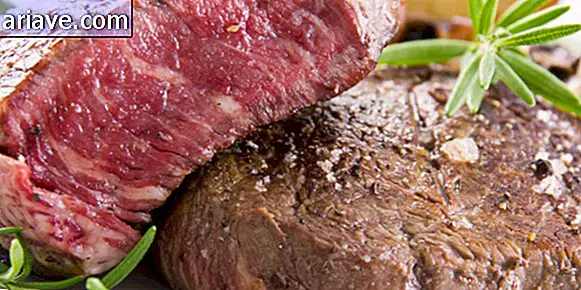Next stop: Spain - learn more about the land of flamenco
When you think of Spain, some of the things that probably come to mind are football teams - like Barça and Real Madrid, for example - the infamous bullfighting, the famous paella and the lazy siesta . However, this country, which occupies most of the Iberian peninsula, is not limited to this alone.
There are thousands of aspects that make this land of happy people a unique place, and then you can check out some curiosities about this amazing country. Ready to start the trip?
First, the numbers

Spain is the fourth largest country in Europe and has a population of approximately 47 million, of which 5.5 million are foreigners. As it is located on peninsular territory, the country has almost 5, 000 kilometers of coastline, so there are thousands of beaches for all tastes for tourists and natives to stretch to enjoy the sun.
It is no wonder that Spain is the fourth most visited country in the world, receiving approximately 58 million tourists a year. Not to mention that, in addition to the beaches, visitors can still discover a huge variety of historical monuments, more than 40 UNESCO World Heritage sites, as well as taste the cuisine, have fun in traditional festivals and absorb the culture.
Meteoric Journey Through History

If you ever go to Spain, you will find that side by side with modern buildings there are countless Roman structures - many still in use! - and cities that seem to have come out of the book "The Thousand and One Nights." Not to mention that the Spanish territory also houses one of the most important places for world prehistory, located in the Sierra de Atapuerca, therefore, there are records of inhabitants in the peninsula of more than 400 thousand years.

Taking a meteoric time travel, jumping from prehistory to the year 206 a. C., we come to the time when the Romans occupied the peninsula which they called Hispania - a word that probably gave rise to the name of the country. After the Romans, who remained in the region until the 5th century, Spain was also dominated by the Visigoths and later by the Muslims, who turned it into an emirate.

In fact, the territory was only regained more than 7 centuries later by the Catholic Kings - Fernando de Aragon and Isabel de Castile - who, by the way, were also the monarchs responsible for the voyage in which Columbus “discovered” America. Well, with that little bit of history that we mention here, you can imagine how many traces these people have all been leaving over the years, creating a veritable cultural and architectural mishmash that forms part of what the country is today.
The siesta ...

You may have heard of the famous “siesta”, that is, the little sonaquinha that the Spanish take after lunch. If you have ever visited the country, you have surely realized - and may even have been surprised - that much of the trade and workplaces are closed during this time. Incidentally, the odd hours are not restricted to commercials when compared to the rest of Europe.
Spain does not follow the same pattern as the other countries of the continent, which normally work from 9 to 17. In fact, with regard to breakfast, lunch and dinner, the Spanish also follow a different pace. There people start work at nine in the morning and stop at 2 pm for lunch, returning to their duties at 4 pm, after the famous siesta .

This means that everyone stays at work until after 8 pm, so dinners and social gatherings take place around 10 pm and, believe me, as the Spaniards are beyond partygoers, there's no shortage of people on the streets. and city bars. This crazy schedule was instituted by General Francisco Franco, who was the head of state - and dictator of the country - during World War II.
A little friend of the Nazis, Franco decided to advance the watches to align them with those of Germany, an idea that was also adopted by Portugal. With Hitler's defeat and the end of the war, the Portuguese set their watches according to Greenwich, while the Spanish decided to leave their hands as they were. And that's how Spain got this time in disarray with the rest of the continent.
Traditional parties

In addition to the Pamplona bull races - which take place annually in July - there are so many traditional festivals that are worth knowing a bit more. In Valencia, for example, in March, to celebrate St. Joseph's Day, Fallas are celebrated which, for those who like fireworks or have a more ablaze arson side, are a full plate!
Still in the Valencian community in the small town of Buñol, there is Tomatina - in August - which is that huge tomato war you may have seen on TV. Another unmissable party is the Feria de Abril de Seville, during which many people dress in traditional costumes and play flamenco. Holy Week is also an important event throughout the country and, for those who miss Brazil, even have carnival in Santa Cruz de Tenerife.
Tapas, Paella and Bleed

There are some delicacies that are typically Spanish, such as tapas, paella and hemorrha . The first of these, tapas, are appetizers served in bars to accompany drinks, whether alcoholic or not. Already with the bleeding is better to be careful! Made with fresh red wine, lemon juice, orange, chopped fruits, sugar and some liqueur, the drink is treacherous because, although it seems weak, has a high alcohol content.
Paella is probably the best known typically Spanish dish in the world, and the recipe comes from Valencia. Incidentally, this is also the name of the pan in which the delicacy is prepared and, although the version made with seafood is the most famous, the traditional Valencian is made with chicken and rabbit meat. Check out more interesting facts about Spain:
More curiosities
- After Scandinavia, Spain has the lowest population density in western Europe;
- Spain is the country with the most bars in the European Union;
- There are more car owners than cell phones in the country;
- Spanish is among the most widely spoken languages in the world, with 329 million native speakers;

- In addition to Spanish or Castilian, there are other official languages and dialects that are spoken by the peninsula, such as Catalan, Galician, Basque, Valencian, Aragonese and Asturian;
- Every year, about 143 million euros are left in Ibiza by party tourists;
- Same-sex marriage has been legalized in Spain since 2005;
- The main sport in the country - which is practically a religion among the Spaniards - is football, and the most famous team with the most fans in the world is Real Madrid, with 228 million followers;

- More than 98% of the Spanish population was made up of Catholics. Today that proportion has fallen to approximately 76%;
- Various foods, such as potatoes, tomatoes, avocados, and cocoa, were introduced to Europe by the Spanish conquerors who took them from the Americas;
- In Spain, 44% of all olive oil on the planet is produced;

- In addition to having 17 autonomous communities, the Balearic Islands in the Mediterranean, the Canary Islands in the Atlantic, the cities of Ceuta and Melilla, located in North Africa, as well as several other islands, also belong to the country;
- Flamenco is a style of music and dance originating in the Andalusian region of southern Spain, born from a mixture of Arab, Gypsy, Castilian, Jewish, etc .;
- The controversial bullfighting is the oldest popular spectacle in Spain, and the format we know today - in which the bullfighter kills the animal at the end of the battle - emerged in the 18th century. Today, after much fighting and petition from the population, Bullfights have already been banned in many locations and only happen in some cities. Hello to the Spanish people!
* Originally posted on 21/02/2014 .
***
Do you know the Mega Curioso newsletter? Weekly, we produce exclusive content for lovers of the biggest curiosities and bizarres of this big world! Register your email and do not miss this way to keep in touch!











